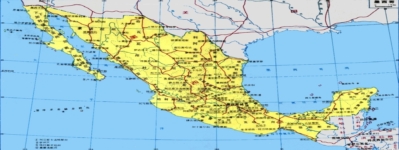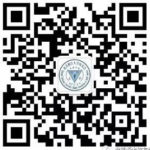How Autonomous Systems Make Decisions: Lessons from Aviamasters
Autonomous decision-making systems are increasingly integral to modern technology, from self-driving cars to intelligent robots. Understanding how these systems make choices is essential for designing reliable, safe, and efficient automation. This article explores the foundational principles of autonomous decision processes, examines different paradigms, and draws lessons from the game Aviamasters mega fun! to illustrate key concepts. By analyzing various decision strategies and their implications, we aim to bridge theoretical understanding with practical applications in real-world autonomous systems.
Contents
- Introduction to Autonomous Decision-Making Systems
- Foundations of Autonomous Decision Processes
- Decision-Making Paradigms in Autonomous Systems
- Lessons from Modern Examples: The Case of Aviamasters
- Analyzing Decision Strategies: Speed Modes in Aviamasters
- Decision Outcomes and Reinforcement Learning in Games
- The Role of Randomness and Verification in Autonomous Decisions
- Depth Analysis: Balancing Speed and Accuracy in Decision-Making
- Limitations and Challenges in Autonomous Decision-Making
- Future Trends: Enhancing Autonomous Decision Capabilities
- Summary and Educational Takeaways
- References and Further Reading
Introduction to Autonomous Decision-Making Systems
Autonomous systems are capable of performing tasks and making decisions without human intervention. They are embedded in various modern technologies, such as autonomous vehicles, drones, industrial robots, and intelligent software agents. The core of these systems lies in their ability to perceive the environment, process information, and execute appropriate actions based on their decision algorithms.
Effective decision-making is vital for ensuring that autonomous systems operate safely and efficiently, especially in dynamic and unpredictable environments. For instance, a self-driving car must interpret sensor data to decide whether to brake, steer, or accelerate—often within milliseconds. Understanding these processes provides insights into designing systems that can adapt, learn, and function reliably across diverse scenarios.
In this article, we will explore the foundational principles that underpin autonomous decision-making, compare different paradigms, and analyze practical examples, including lessons from the game Aviamasters mega fun!.
Foundations of Autonomous Decision Processes
Core Concepts: Perception, Processing, and Action
At the heart of autonomous decision-making are three interconnected components: perception, processing, and action. Perception involves gathering data from sensors or inputs, such as cameras, lidar, or user commands. Processing interprets this data to understand the environment, identify obstacles, or predict future states. Finally, action involves executing commands—like steering, braking, or communicating—that influence the system’s environment.
Role of Algorithms and Data in Decision-Making
Algorithms serve as the “brain” of autonomous systems, transforming raw data into meaningful decisions. These algorithms rely heavily on data—whether collected in real-time or from historical records—to learn patterns, optimize responses, and improve over time. Machine learning models, such as neural networks, exemplify how data-driven approaches enable systems to adapt to complex, unpredictable environments.
Differentiating Autonomous from Semi-Autonomous Systems
While autonomous systems operate independently, semi-autonomous ones require human oversight or intervention. For example, modern driver-assist features like lane-keeping assist are semi-autonomous; they support but do not entirely replace human control. Fully autonomous systems, on the other hand, must handle decision-making in diverse scenarios without human input, demanding more sophisticated algorithms and verification methods.
Decision-Making Paradigms in Autonomous Systems
Rule-Based vs. Learning-Based Approaches
Rule-based systems operate on predefined if-then rules, offering predictability and safety but limited flexibility. For example, a robotic arm might be programmed to stop if an obstacle is detected. Conversely, learning-based systems utilize machine learning to adapt behaviors based on data, enabling better handling of novel situations but raising challenges in verification and safety.
Probabilistic Models and Uncertainty Handling
Probabilistic models incorporate uncertainty directly into decision-making, acknowledging that sensor data and environment states are often incomplete or noisy. Techniques like Bayesian inference allow autonomous systems to compute the likelihood of various outcomes, leading to more robust decisions, especially in unpredictable scenarios. This approach mirrors how human judgment often considers probabilities and risks.
Ethical and Safety Considerations in Autonomous Decisions
Autonomous systems must adhere to ethical principles, particularly when decisions impact human safety. Safety layers, fail-safes, and transparency are integrated to prevent harm. For example, an autonomous vehicle might be programmed to prioritize human life over property damage, reflecting societal values and regulatory standards. Balancing autonomy with accountability remains a key challenge.
Lessons from Modern Examples: The Case of Aviamasters
Overview of Aviamasters Game Rules as a Decision-Making Environment
Aviamasters presents a controlled environment where decision strategies are tested against probabilistic outcomes governed by a verified RNG (Random Number Generator). The game mechanics simulate real-world decision challenges, such as balancing risk and reward, adapting to varying speeds, and responding to unpredictable events. This makes it an ideal educational analogy for autonomous decision processes.
How the RNG Exemplifies Verified Probabilistic Decision Models
The RNG in Aviamasters ensures fairness and unpredictability—crucial qualities for trustworthy autonomous decision-making. Verified RNGs, backed by cryptographic and statistical validation, demonstrate how autonomous systems can incorporate randomness securely, avoiding biases or manipulation. This parallels real-world applications like secure cryptography or randomized algorithms that underpin autonomous safety mechanisms.
The Impact of Game Mechanics (Speed Modes) on Decision Strategies
Different speed modes in Aviamasters—such as Tortoise, Man, Hare, and Lightning—illustrate how decision timing influences outcomes. Slower modes favor careful, risk-averse strategies, while faster modes demand rapid automatic responses. These mechanics serve as a microcosm of how autonomous systems must adjust decision speeds based on task urgency and environmental complexity.
Analyzing Decision Strategies: Speed Modes in Aviamasters
Tortoise: Conservative Decision-Making and Risk Aversion
The Tortoise mode emphasizes deliberate, cautious decisions, minimizing risks such as landing on dangerous tiles. This approach aligns with safety-critical autonomous systems that prioritize reliability over speed, such as medical robots or nuclear plant controls.
Man: Balanced Speed with Adaptive Choices
The Man mode balances decision speed with flexibility, allowing adaptation based on current game state. Autonomous vehicles often operate similarly, adjusting their decision-making pace based on traffic conditions, weather, and other factors.
Hare: Aggressive Strategies and Rapid Decision Shifts
Hare mode involves quick, sometimes risky decisions, aiming for rapid progress. While beneficial in time-sensitive tasks, such strategies can increase the likelihood of errors or accidents—highlighting the importance of appropriate speed adaptation in autonomous systems.
Lightning: High-Speed Decisions and Automatic Responses
Lightning mode relies on automatic, reflex-like responses, suitable for situations demanding instant decisions. Examples include collision avoidance in autonomous drones or emergency braking systems, where delays could be critical.
Decision Outcomes and Reinforcement Learning in Games
How Winning Conditions (Landing on a Ship) Influence Decision Policies
In Aviamasters, success depends on landing on ships, which rewards specific decision patterns. Similarly, autonomous systems optimize policies based on goal achievement, such as reaching a destination or minimizing energy consumption. Reinforcement learning models simulate this process by rewarding successful decisions and penalizing failures.
Feedback Loops and Learning from Outcomes within the Game Context
Repeated gameplay allows systems to adapt strategies through feedback, improving decision accuracy over time. Reinforcement learning exemplifies this, enabling autonomous agents to refine behaviors based on environmental responses, much like players adjusting tactics based on game outcomes.
“Incorporating feedback and probabilistic decision models enhances the robustness of autonomous systems in unpredictable environments.”
This principle underscores the importance of adaptive learning mechanisms in real-world applications, from robotics to finance.
The Role of Randomness and Verification in Autonomous Decisions
Significance of Certified RNGs and Their Role in Fairness and Unpredictability
Certified RNGs ensure that decision outcomes are truly unpredictable and free from manipulation, which is crucial in applications like cryptography or gaming fairness. In autonomous systems, secure randomness supports unpredictable yet safe responses, preventing malicious exploitation.
How Verified Randomness Models Contribute to Trustworthiness of Autonomous Choices
Verification processes, such as cryptographic proofs, validate the integrity of randomness sources. This assurance builds trust in autonomous decision-making, especially in safety-critical sectors like aerospace or healthcare, where predictability of malicious interference must be minimized.
Lessons for Autonomous Systems Beyond Gaming, Such as Safety-Critical Applications
Incorporating verified randomness and rigorous testing enhances the resilience and fairness of autonomous systems. For example, randomized decision elements in drone navigation can prevent predictability by adversaries, improving security and safety.
Depth Analysis: Balancing Speed and Accuracy in Decision-Making
Trade-offs Involved in Different Decision Speeds in Aviamasters
Slower decision modes favor accuracy and safety, reducing errors but increasing response time. Faster modes enhance agility but risk mistakes due to limited processing time. Striking a balance depends on task requirements—a principle applicable in autonomous systems like self-driving cars that must adapt decision speed based on traffic complexity.
Analogies to Real-World Autonomous Systems (e.g., Self-Driving Cars)
In autonomous vehicles, decision speed varies: highway cruising allows for slower, deliberate decisions, while emergency maneuvers require rapid responses. Adaptive algorithms dynamically balance these speeds to maintain safety without sacrificing efficiency.
Strategies to Optimize Decision Timing Based on Context and Risk
Techniques such as hierarchical decision-making and real-time risk assessment enable autonomous systems to choose appropriate decision speeds. Integrating probabilistic models ensures that rapid responses remain reliable under uncertainty.
Limitations and Challenges in Autonomous Decision-Making
Dealing with Uncertainty and Incomplete Information
Real-world environments are often unpredictable, with sensor noise, occlusions, or incomplete data. Probabilistic models help mitigate these issues, but accurately quantifying uncertainty remains challenging, impacting decision reliability.
Managing Unintended Biases in Algorithms, Illustrated Through Game Mechanics
Biases can emerge from training data or algorithmic design, leading to suboptimal or unfair outcomes. In Aviamasters, skewed probability distributions can unfairly influence game results, serving as a metaphor for biases in autonomous decision processes that must be carefully managed.
Ensuring Robustness and Reliability in Dynamic Environments
Autonomous systems must adapt to changing conditions without failure. Techniques like redundancy, continuous learning, and rigorous validation are essential for robustness, especially in safety-critical applications such as medical robotics or autonomous aviation.









